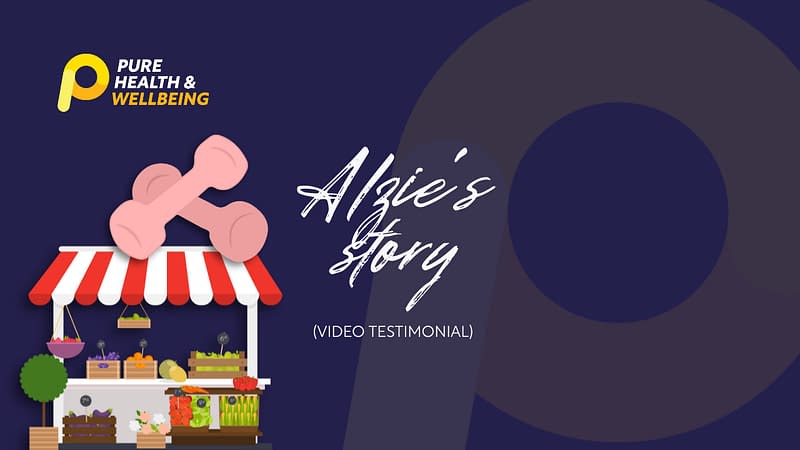Sue’s Story
Sue experienced a stroke 7 years ago which left a weakness on one side of her body, along with problems with her balance and mobility. Sue’s health started deteriorating, leading to widespread pain within her body and joints, soreness to the touch, and multiple tender areas. She experienced low energy, tiredness, and poor sleep.
These symptoms had been ongoing for a number of years; she had some investigations and was diagnosed with Fibromyalgia in August 2024. This diagnosis brought a lot of fear, confusion, and shock. Sue felt restricted, hopeless, and didn’t know how to move forward.
Sue has a supportive family who support her physically and mentally. This support network is vital when working towards a journey of improvement. Health and wellbeing coaching can help build self-confidence, provide support, and offer personalised guidance to work towards goals.
What We Did
Sue was referred to the pain support service by the Care Coordinator and started health and wellbeing sessions two weeks after her Fibromyalgia diagnosis. Our first session together focussed on exploring thoughts, feelings, and how life was affected. The first two sessions centred on her story, allowing a safe space to speak and validating her life experiences. Building a connection between the patient and coach is vital in the process and enables a shared trust.
Resources were sent that laid the foundations of persistent pain and provided information about fibromyalgia. Sue took the time to read through them in small chunks. She experienced a flare-up due to a change in medications; during this time, we focussed on the elements that were within her control, such as reading resources and speaking openly to expand her understanding of pain and how it affects us emotionally.
Sue experienced feelings of fear in relation to movements; the thought of increased pain was overwhelming, and it was easier not to do any movements. We focussed on fear avoidance and gradual exposure to movement while implementing pacing. This was done in a controlled and progressive manner, with the decisions being made by Sue herself.
The following session, she had made huge progress. Sue reported that she was doing more activities than before, balancing movement and rest, sleep was improving, and she felt in control of what she was experiencing. Sue stated that having the education and resources to back up what she was doing was effective and gave her the drive to continue.
The resources that were relevant to Sue’s journey included:
- Pacing
- Pain and our overprotective system
- Mindfulness and pain
- Reframing unhelpful thoughts – self-help CBT
- Fear avoidance
- Getting moving with gradual progress
- Pain & The Brain
- Managing setbacks
Over the course of our sessions together, Sue became more curious; she wanted to explore pain and how to move forward. She reported that she felt a freedom away from the diagnoses of Fibromyalgia and knew she could have a future where she would get better and be able to self-manage.
“My health and wellbeing sessions have been incredibly helpful, guiding me in the right direction. Having the opportunity to speak to Claire and the resources that back up our conversations has been really helpful.”
Sue’s Story: Moving Forward!
Sue spent 11 weeks on the pathway until she was confident to be discharged. Sue’s PSEQ score started at 17/60 and, in her last session, had increased to 57/60. Sue is completing household chores, exercising regularly, going on shopping trips, and speaking openly with her family. She is extremely confident in all activities of daily living and is living a full and meaningful life, which is outstanding!
Sue’s health and wellbeing sessions were focussed on her personal needs and the areas that arose during her sessions. Focussing on small steps and staying present in each session, we dealt with the real-life issues that presented themselves.
On her final session, Sue was feeling more confident in herself and her ability. Sue doesn’t feel scared of moving and has started exercising every other day, ensuring she is pacing activities and allowing her body to recover. She is now doing more than she has ever done. The most important part of Sue’s journey was her recognising the work she had done herself to improve her own life.
“I now understand that I don’t have to stay in the chair all day—I’m free to do the things I want. I’m doing more than I have ever done, and I’m so proud of the person I have become. This feels like the start of the rest of my life that I have ahead of me. I’m no longer worried about my diagnosis of Fibromyalgia; I know it’s part of me, but it won’t stop me doing anything.” Sue (Aged 72)




